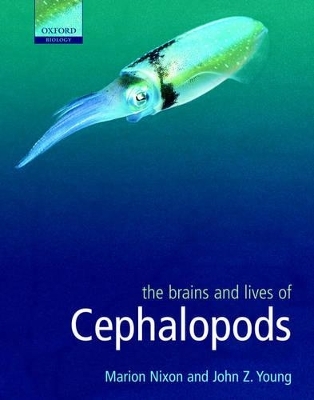
The Brains and Lives of Cephalopods
Oxford University Press (Verlag)
978-0-19-852761-9 (ISBN)
The cephalopods include nautiluses, cuttlefishes, sepiolids, squids and octopuses. They are found throughout the world's seas, from Arctic to Antarctic waters, from the inter-tidal zone to mid-ocean, and from surface waters to deep trenches.
Many differences in size, form and life-style are found among these animals. They range from the giant squid, the world's largest marine invertebrate, to species of less than two centimetres in length. Apart from nautilus, which live for more than fifteen years, most are short-lived and grow to maturity very quickly. Their reproductive habits also differ widely: some produce many eggs that are spawned simultaneously, some produce relatively few eggs spawned at intervals, others brood their eggs and one species is ovoviviparous.
Most cephalopods are agile and swift-moving and all possess elaborate sense organs, well-developed nervous systems and complex behaviour. The brain is large and highly organised with many lobes, some of which process sensory inputs, some organise motor activity and others are involved in modifying behaviour: the capacity to communicate and learn is especially well-developed in these animals. All of these features have been major factors in enabling cephalopods to pursue a variety of predatory life-styles with great success.
The book describes the brains and sense organs of 57 of the 139 genera of the class Cephalopoda, many in great detail, as well as a variety of morphological features, all dealt with systematically. The text is well-illustrated with fully labelled line drawings and photomicrographs. Attention is drawn to the many gaps in our knowledge of these intriguing marine invertebrates with a view to stimulating future research.
Dr Marion Nixon The Old Library, School Road, Broughton, Cambridgeshire, PE28 3AT 01487 822 015 Honorary Research Fellow, Birkbeck College, University of London B.Sc., Ph.D Fellow of Linnean society Professor John Z. Young (Deceased) Emeritus Professor of Anatomy, University College, London
1. Introduction ; 2. The Central Nervous System and Sensory Systems: an outline ; 3. Nautilidae ; 4. Spirulidae ; 5. Sepiidae ; 6. Sepiolidae ; 7. Idiosepiidae ; 8. Pickfordiateuthidae and Loliginidae ; 9. Ctenopterygidae ; 10. Enoploteuthid group ; 11. Neoteuthidae ; 12. Lycoteuthidae ; 13. Histioteuthidae ; 14. Bathyteuthidae ; 15. Architeuthidae ; 16. Ommastrephidae ; 17. Onychoteuthidae ; 18. Gonatidae ; 19. Brachioteuthidae ; 20. Lepidoteuthidae and Pholidoteuthidae ; 21. Octopoteuthidae ; 22. Thysanoteuthidae ; 23. Cycloteuthidae ; 24. The 'Chiroteuthid Lineage' ; 25. Cranchiidae ; 26. Vampyroteuthidae ; 27. The Cirroctopodida ; 28. Amphitretidae ; 29. Bolitaenidae ; 30. Vitreledonellidae ; 31. Octopodidae ; 32. Tremoctopodidae ; 33. Argonautidae ; 34. Alloposidae ; 35. Ocythoidae ; Appendix ; References
| Erscheint lt. Verlag | 4.9.2003 |
|---|---|
| Zusatzinfo | numerous halftones and line figures |
| Verlagsort | Oxford |
| Sprache | englisch |
| Maße | 228 x 284 mm |
| Gewicht | 1261 g |
| Themenwelt | Naturwissenschaften ► Biologie ► Limnologie / Meeresbiologie |
| Naturwissenschaften ► Biologie ► Zoologie | |
| ISBN-10 | 0-19-852761-6 / 0198527616 |
| ISBN-13 | 978-0-19-852761-9 / 9780198527619 |
| Zustand | Neuware |
| Haben Sie eine Frage zum Produkt? |
aus dem Bereich


